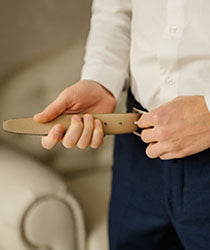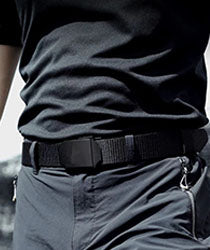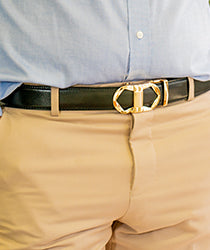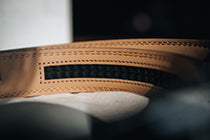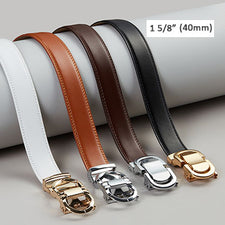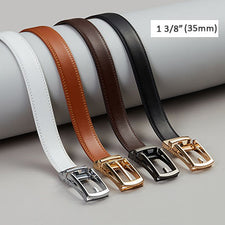Layering is not just about staying warm during colder seasons or adapting to changing weather conditions; it is an art form that allows you to express your unique sense of style and create visually captivating outfits. By strategically combining different garments and accessories, layering adds depth, dimension, and texture to your overall look.
The beauty of layering lies in its versatility and endless possibilities. It offers you the opportunity to experiment, mix and match, and create outfits that are truly one-of-a-kind. Whether you're going for a casual, chic, or professional look, layering allows you to tailor your ensemble to suit the occasion and showcase your personal flair.
When mastering the art of layering, it's important to consider both functionality and aesthetics. Each layer serves a purpose, from the base layer that provides comfort and breathability to the middle layers that add interest and style, and finally, the outerwear that adds the finishing touch and protects you from the elements.
Layering is not limited to a specific gender or body type. It is a fashion technique that can be embraced by anyone, regardless of their shape, size, or gender identity. By understanding your body type and experimenting with different layering techniques, you can create flattering silhouettes that highlight your best features and boost your confidence.
In this ultimate guide, we will delve into the world of layering, providing you with tips, inspiration, and practical advice to help you master the art of layering. From essential pieces to color coordination, from seasonal layering to style inspiration for both men and women, we will cover every aspect to ensure you have the knowledge and tools to create stunning layered outfits.
So, get ready to unleash your creativity, elevate your style, and embrace the art of layering. Let's dive into this ultimate guide and discover how you can transform your wardrobe into a canvas for self-expression.
1. Essential Pieces for Layering
Essential Pieces for Layering
- Lightweight T-shirts and Tank Tops
- Button-up Shirts for Versatile Styling
- Sweaters and Cardigans: Layering Essentials
- Blazers and Jackets: Elevate Your Look
- Scarves and Shawls: Adding Texture and Warmth
- Leggings and Tights: Versatile Layering Options
- Long-Sleeved Tops: A Staple for Layering
- Vests: Adding a Touch of Style
2. Building a Solid Base Layer
When it comes to layering your outfits, building a solid base layer is essential. The base layer serves as the foundation for your layered ensemble and should be chosen carefully to ensure both comfort and style. Here are some key considerations:
Comfort and Fit: Choose base layer pieces that are comfortable to wear throughout the day. Look for fabrics that feel soft against your skin and provide breathability. Opt for materials like cotton, bamboo, or moisture-wicking synthetics to keep you cool and dry.
Versatility: Opt for base layer pieces that can be easily paired with different garments. Neutral colors like white, black, or gray are versatile and can seamlessly blend with various colors and patterns. This allows you to create multiple outfits using the same base layer.
Silhouette and Shape: Pay attention to the silhouette and shape of your base layer. Depending on the look you want to achieve, you can choose fitted base layers for a sleek and streamlined appearance or opt for looser fits for a more relaxed and casual vibe. Consider your body type and personal style when selecting the right silhouette.
Sleeve Length: Consider the sleeve length of your base layer based on the overall layering look you're going for. Short sleeves work well for warmer weather or when you plan to add bulkier layers on top. Long sleeves provide more coverage and warmth during colder seasons. Choose the appropriate sleeve length for the desired level of comfort and style.
Neckline: The neckline of your base layer can also affect the overall look of your outfit. Choose from options like crew neck, V-neck, scoop neck, or mock neck based on your personal style and the other layers you plan to add. Experiment with different necklines to create interesting visual details and enhance your overall look.
Layering Undergarments: For certain outfits, you may need specific undergarments to enhance the base layer. Consider seamless underwear or undershirts that won't create visible lines under your clothing. Additionally, think about whether you'll need a camisole or tank top for added coverage or to achieve a particular style. These undergarments can provide extra comfort and help create a smooth and seamless look.
Remember, the base layer sets the stage for your layered outfit, so it's important to choose pieces that are comfortable, versatile, and well-fitted. By selecting the right base layer, you'll create a solid foundation for building stylish and coordinated layered looks.
3.Adding Dimension and Style with Middle Layers
Once you have a solid base layer, it's time to move on to the middle layers. The middle layers are where you can add dimension, texture, and style to your outfit. Here's how you can effectively incorporate middle layers into your layered looks:
Mixing Lengths: Experiment with layering different lengths to create visual interest. Pair a shorter cardigan or sweater with a longer shirt or tunic underneath. This contrast in lengths adds depth to your outfit and creates a stylish silhouette.
Texture and Fabric: Incorporate various textures and fabrics in your middle layers to elevate your look. Opt for chunky knit sweaters, denim jackets, or leather vests. Mixing textures adds visual appeal and creates a dynamic layered ensemble.
Patterns and Prints: Introduce patterns and prints through your middle layers to add personality to your outfit. Consider plaid shirts, striped sweaters, or patterned button-up shirts. Mixing patterns can create a visually intriguing look and serve as a focal point in your ensemble.
Sleeve Variations: Play with different sleeve lengths and styles in your middle layers. Roll up the sleeves of a shirt to expose the base layer, or layer a long-sleeved top under a short-sleeved sweater for added interest. Sleeve variations add uniqueness and individuality to your layered look.
Open or Closed: Middle layers can be worn open or closed, depending on the style you want to achieve. Leave cardigans unbuttoned or unzipped for a relaxed and effortless vibe. Alternatively, button up or zip your jackets or vests for a more polished and put-together appearance.
Color Coordination: Pay attention to color coordination between your layers. Harmonize colors or experiment with contrasting shades to create visually striking effects. Coordinate colors to create a cohesive and balanced look.
By incorporating these techniques, you can create layered outfits that are visually captivating and reflect your personal style. Have fun experimenting with different lengths, textures, patterns, and colors to achieve the perfect middle layers for your layered ensembles.
4. Completing the Look with Outerwear
The final layer of your layered outfit is the outerwear, which adds the finishing touch and provides protection from the elements. Here's how you can choose and style outerwear to complement your layered look:
Choose the Right Outerwear: Select outerwear that suits the overall style and purpose of your outfit. Options for men include coats, jackets, blazers, or statement pieces like leather jackets. Consider the weather conditions and the occasion to determine the appropriate outerwear.
Fit and Proportion: Ensure that your outerwear fits well and flatters your body shape. Pay attention to the length, sleeves, and overall proportion in relation to your other layers. A well-fitted outerwear piece creates a polished and put-together appearance, while a looser or oversized option adds a relaxed and casual vibe.
Coordinate Colors: Coordinate the colors of your outerwear with the rest of your layers to create a cohesive look. Choose complementary or matching colors to tie your ensemble together. Experiment with contrasting colors to make a statement or add visual interest.
Layering Underneath: Consider the thickness and bulkiness of your outerwear when layering underneath. If your outerwear is on the thicker side, opt for thinner or more fitted middle layers to avoid excessive bulk. This ensures a more streamlined and balanced silhouette.
Accessorize Smartly: Enhance your layered look by adding accessories to your outerwear. Scarves, gloves, hats, or statement belts can elevate your outfit and provide additional warmth. Choose accessories that complement your style and add a touch of personality to your ensemble.
Versatility: Invest in versatile outerwear pieces that can be worn with various outfits. A classic coat, a well-tailored blazer, or a versatile jacket can effortlessly complement different styles and serve as a go-to outerwear option.
Remember, outerwear not only provides functionality but also contributes to the overall style of your layered outfit. Choose outerwear that complements your layers, fits well, and enhances your overall look. By carefully selecting and styling your outerwear, you can achieve a cohesive and stylish layered ensemble.

5. Accessorizing with Layers
Accessorizing is an important element when it comes to layering your outfits. The right accessories can elevate your layered look, add a personal touch, and enhance the overall style and visual appeal. Here are some tips for accessorizing with layers:
Scarves: Scarves are versatile accessories that can add both style and warmth to your layered outfits. Choose scarves in different materials, such as lightweight cotton or wool blends. Experiment with various wrapping styles, such as draping it around your neck or tying it in a loose knot, to add visual interest.
Belts: Adding a belt to your layered outfit can help define your waist and create a more polished and structured look. Opt for belts in leather or fabric, and choose a width that complements your body proportions. Cinch a belt over a cardigan or a blazer to accentuate your silhouette.
Hats: Hats not only provide protection from the sun or cold weather but also add a stylish element to your layered ensemble. Fedora hats, beanies, or wide-brimmed hats can instantly elevate your look. Choose a hat that complements your personal style and matches the overall vibe of your outfit.
Gloves: In colder months, gloves are essential accessories that can be both functional and fashionable. Look for gloves in leather, wool, or knit materials. Opt for gloves that fit well and complement the colors of your layered outfit. Consider touchscreen-compatible gloves for added convenience.
Statement Jewelry: Layered outfits provide a great opportunity to showcase statement jewelry. Add a bold necklace, stack bracelets, or wear a statement ring to add personality and visual interest to your look. Choose jewelry pieces that complement the colors and style of your layers.
Bags: Complete your layered look with the right bag. Choose a bag that suits the occasion and complements your overall style. Consider messenger bags, backpacks, or briefcases for a casual or professional look. Opt for a bag in a neutral color that coordinates well with your layers.
Shoes: Don't forget to pay attention to your footwear when layering. The right shoes can elevate your overall look and tie your layered ensemble together. Choose shoes that match the style and formality of your outfit. Sneakers, boots, or dress shoes can all work well depending on the occasion and the overall vibe you want to achieve.
Remember, accessories are the finishing touches that complete your layered look. They allow you to express your personal style, add visual interest, and create a cohesive and well-put-together ensemble.
6. Color Coordination and Textures
When layering, paying attention to color coordination and textures can take your outfit to the next level. Here are some tips for effectively coordinating colors and textures in your layered ensembles:
Complementary Colors: Choose colors that complement each other to create a harmonious look. Consider using analogous colors (colors that are next to each other on the color wheel) or contrasting colors (colors that are opposite each other on the color wheel). Experiment with different color combinations to find what suits your personal style.
Neutral Base: Start with a neutral base layer, such as white, black, gray, or navy. Neutrals act as a versatile canvas and allow you to incorporate different colors and textures into your layers without overwhelming the overall look. They provide a solid foundation for mixing and matching various garments.
Monochromatic Tones: Creating a monochromatic look by layering different shades of the same color can result in a sophisticated and cohesive outfit. Layering various tones of blue or gray, for example, can add depth and visual interest to your ensemble.
Texture Contrast: Experiment with different textures to add depth and visual interest to your layers. Mix and match textures like chunky knits, smooth leather, or lightweight fabrics to create a dynamic and tactile outfit. The contrast in textures will make each layer stand out while maintaining a cohesive look.
Pattern Play: Incorporate patterns into your layered outfits for a lively and eye-catching ensemble. Mix patterns by pairing stripes with solids, plaids with neutrals, or geometric prints with textured fabrics. When mixing patterns, ensure that they share a common color or theme to create a harmonious combination.
Consider Proportions: Pay attention to the proportions of your layered garments when coordinating colors and textures. Ensure that the layers are balanced and that no single layer overwhelms the others. Play with different lengths, volumes, and weights to achieve a well-proportioned and visually appealing result.
Accessorize with Color: Use accessories to add pops of color to your layered look. A vibrant scarf, colorful socks, or a statement watch strap can inject personality and depth into your outfit. Choose accessories that complement the colors in your layers while providing a focal point or contrast.
Remember, color coordination and texture play a significant role in the overall impact of your layered outfits. By carefully selecting and combining colors and textures, you can create visually stunning and harmonious ensembles that reflect your personal style and make a fashionable statement.

7. Seasonal Layering
Layering is not only about creating stylish outfits but also about adapting to different seasons and weather conditions. Seasonal layering allows you to stay comfortable, fashionable, and versatile throughout the year. Here are some tips for effective seasonal layering:
Spring: In spring, the weather can be unpredictable, so layering is key. Start with a lightweight base layer like a T-shirt or a long-sleeved shirt. Layer it with a lightweight sweater or a denim jacket for added warmth and style. Complete the look with a light jacket or a trench coat for those cooler days. Opt for breathable fabrics like cotton or linen to stay comfortable.
Summer: Layering in summer is all about light and breathable fabrics. Begin with a base layer of a lightweight T-shirt or a tank top. Layer it with a loose, open-weave shirt or a linen button-up for a relaxed and stylish look. If needed, add a lightweight unlined blazer or a chambray shirt for those cooler evenings. Keep the layers light and airy to stay cool in the summer heat.
Fall: Fall is the perfect season for layering as temperatures fluctuate. Start with a base layer of a long-sleeved shirt or a lightweight sweater. Layer it with a cardigan, a flannel shirt, or a lightweight jacket. As the weather gets cooler, add a medium-weight coat or a quilted vest for extra warmth. Experiment with different textures and fabrics like flannel, corduroy, or tweed to embrace the fall aesthetic.
Winter: Layering becomes essential in winter to stay warm and cozy. Begin with a thermal or a merino wool base layer for insulation. Layer it with a thick sweater or a fleece-lined hoodie for added warmth. Add a down-filled vest or a quilted jacket for extra insulation. Finally, top it off with a heavy coat like a wool overcoat or a parka to protect against the cold. Don't forget to accessorize with scarves, hats, and gloves to stay cozy in chilly temperatures.
Transitional Seasons: During transitional seasons like early spring or late fall, layering becomes a balance between light and heavier layers. Pair a lightweight base layer with a cardigan or a lightweight jacket for those cool mornings and evenings. Opt for versatile pieces that can be easily removed or added as the temperature changes throughout the day.
Remember to consider the specific weather conditions and dress accordingly for each season. Layering allows you to adapt to changing temperatures and stay comfortable while expressing your personal style.
8. Layering for Different Occasions
Layering can be adapted to different occasions, whether you're dressing casually for a day out or preparing for a formal event. Here are some tips on how to layer your outfits for various occasions:
Casual Outings: For casual occasions, opt for a relaxed and effortless look. Start with a basic T-shirt or a henley as your base layer. Layer it with a flannel shirt or a lightweight sweater for added style. Complete the look with jeans or chinos and finish off with sneakers or boots for a comfortable and casual vibe.
Work or Business: When layering for work or business settings, aim for a polished and professional look. Start with a crisp button-up shirt as your base layer. Layer it with a tailored blazer or a sweater vest for a refined appearance. Pair it with dress pants or chinos and choose dress shoes or loafers to complete your sophisticated outfit.
Date Night: For a date night, layering can add depth and intrigue to your outfit. Start with a fitted shirt or a sleek turtleneck as your base layer. Layer it with a tailored blazer or a leather jacket for a touch of sophistication. Pair it with dark jeans or trousers and complete the look with dress shoes or Chelsea boots for a stylish and refined ensemble.
Special Events: Layering can be adapted for special events like weddings or parties. Begin with a tailored dress shirt or a formal blouse as your base layer. Layer it with a waistcoat or a structured blazer for a polished and elegant look. Pair it with dress pants or a skirt and choose formal shoes to complete your formal layered ensemble.
Outdoor Activities: When engaging in outdoor activities like hiking or skiing, layering is essential for comfort and protection. Start with a moisture-wicking base layer to keep you dry. Layer it with a lightweight fleece or a down jacket for insulation. Add a waterproof and windproof shell as your outer layer to shield you from the elements. Pair with outdoor-friendly pants or leggings and choose sturdy hiking boots or snow boots for optimal functionality.
Remember to consider the dress code and formality of the occasion when layering your outfits. By adapting your layers to different settings, you can create appropriate and stylish looks for any event or activity.
9. Tips for Flattering Silhouettes
Layering allows you to create flattering silhouettes that highlight your best features and make you feel confident in your outfit. Here are some tips to achieve flattering silhouettes when layering:
Proportion and Balance: Pay attention to the proportions of your layers to create a balanced silhouette. For example, if you're wearing a more relaxed and flowy base layer, consider adding more structured and fitted middle and outer layers to create a flattering contrast. On the other hand, if you're wearing a fitted base layer, layer it with looser or oversized pieces for a more relaxed and modern look.
Define the Waist: Creating definition at the waist can enhance your silhouette and create a more flattering shape. Use belts, cinched cardigans, or jackets with nipped-in waists to accentuate your waistline. This helps create an hourglass figure and adds a touch of femininity to your layered outfit.
Layer with Length: Experiment with layering different lengths to elongate your silhouette and create a slimming effect. Pair a longer base layer, such as a tunic or a longer-length shirt, with a shorter middle layer, like a cropped cardigan or a waist-length jacket. This creates vertical lines and visually lengthens your body.
Vary Necklines: Play with different necklines to flatter your upper body. For example, if you have a longer neck, consider wearing a V-neck or a scoop neck base layer to elongate your neckline further. If you have a shorter neck, opt for crew neck or boat neck tops to create the illusion of a longer neck and draw attention upwards.
Play with Layers: Layering offers the opportunity to strategically conceal or highlight certain areas of your body. If you're conscious about your midsection, choose a middle layer like a long cardigan or a duster coat to create a slimming effect. If you want to highlight your waist, wear a shorter middle layer or opt for a belted outer layer to emphasize your curves.
Avoid Excessive Bulk: Be mindful of excessive bulk when layering to maintain a streamlined and flattering silhouette. Too many bulky layers can add visual weight to your frame. Instead, opt for thinner and more lightweight fabrics for your base and middle layers. Reserve the bulkier fabrics for your outerwear to create a more balanced look.
Tailoring is Key: Consider tailoring your layers to ensure a perfect fit. Well-fitted clothing can make a significant difference in how your layers come together and how flattering they appear on your body. Invest in alterations if needed to achieve a polished and tailored look that enhances your silhouette.
Remember, the key to achieving flattering silhouettes when layering is to create a balance between fitted and loose layers, define your waistline, and play with proportions. Experiment with different layering techniques and garment combinations to find what works best for your body type and personal style.
10. Layering for Men: Style Inspiration
Layering isn't just for women; men can also create stylish and versatile outfits through layering. Here are some style inspirations and tips for men's layering:
Casual Cool: For a casual and effortless look, start with a basic base layer like a plain T-shirt or a lightweight sweater. Layer it with a denim or chambray shirt left unbuttoned. Add a lightweight jacket, such as a bomber jacket or a utility jacket, as your outer layer. Complete the look with jeans or chinos and finish off with sneakers or boots for a relaxed yet stylish ensemble.
Smart Casual: Achieve a smart casual look by layering a collared shirt as your base layer. Layer it with a V-neck sweater or a cardigan for added sophistication. Opt for a blazer as your middle layer to elevate the ensemble. Pair with tailored trousers or dark jeans and choose loafers or dress shoes to complete the refined look.
Street Style: Embrace street style by layering a graphic T-shirt or a longline T-shirt as your base layer. Layer it with a lightweight hoodie or a sweatshirt. Add a denim or leather jacket for a touch of edge. Pair with joggers or slim-fit jeans and finish off with sneakers or high-top boots for a trendy and urban look.
Formal Layers: Layering can also be adapted for formal occasions. Begin with a crisp dress shirt as your base layer. Layer it with a V-neck or a crew-neck sweater for a polished touch. Add a tailored blazer as your middle layer. Pair with dress pants and choose oxford shoes or loafers to complete your formal layered ensemble.
Seasonal Adaptation: Adapt your layers to different seasons. In warmer months, opt for lightweight fabrics like linen or cotton for your base and middle layers. Layer with a lightweight jacket or a linen blazer. In colder months, go for thicker base layers like turtlenecks or sweaters. Layer with a wool or cashmere coat or a puffer jacket for added warmth.
Accessorize Thoughtfully: Add accessories to enhance your layered outfits. Consider adding a scarf, a beanie, or a stylish watch in colder weather. Experiment with different belts to define your waist or add a statement necklace or a bracelet for a touch of personality. Choose accessories that complement your layers and add a cohesive touch to your overall look.
Remember to play with different textures, colors, and proportions to create visually interesting and well-coordinated layered outfits. Experiment with different combinations and find a style that reflects your personality and fits the occasion. With the right layering techniques, men can create fashionable and versatile looks that showcase their personal style.
11. Layering for Different Body Types
Layering can be a great technique for enhancing and flattering different body types. By strategically selecting and layering garments, you can create visually appealing outfits that accentuate your best features. Here are some tips for layering based on different body types:
Muscular Build: If you have a muscular build with well-defined muscles, layering can add depth and dimension to your physique. Opt for fitted base layers like T-shirts or shirts that showcase your physique. Layer with lightweight sweaters or cardigans to add texture and interest. Consider adding a structured blazer or jacket to create a more tailored look. Experiment with different sleeve lengths and necklines to add variety.
Slim Build: For a slim build, layering can create the illusion of more volume and shape. Start with base layers that have some texture or patterns to add visual interest. Layer with thicker and bulkier items like chunky knit sweaters or cable-knit cardigans to add volume. Consider adding a tailored coat or a structured jacket to create a more substantial look. Experiment with layering different lengths to create depth and proportions.
Curvy Build: Layering can help balance and accentuate curves for a curvy build. Start with well-fitted base layers that highlight your curves without being too tight. Layer with mid-length or longer cardigans or duster coats to create a streamlined look. Opt for V-necklines or wrap-style tops to elongate the torso. Avoid bulky layers that can add extra volume. Use belts or cinched waistlines to define your waist and create a flattering silhouette.
Rectangular Build: If you have a rectangular build with fewer defined curves, layering can create the illusion of a more hourglass shape. Start with base layers that have some structure and shape. Layer with items that add volume and interest to the upper body, such as textured sweaters or button-up shirts. Consider adding a belted outer layer or a jacket with cinching details to create the appearance of a defined waist.
Remember, these tips are general guidelines, and it's essential to embrace your unique body shape and experiment with different layering techniques to find what works best for you. Use layering to highlight your favorite features and create a sense of balance and proportion in your outfits.
Conclusion
In conclusion, mastering the art of layering allows you to create stylish, versatile, and weather-appropriate outfits for any occasion. By following these tips and incorporating different layers, you can achieve flattering silhouettes, experiment with colors and textures, and adapt to various climates and body types.
Start with a solid foundation by choosing the right base layer that is comfortable, versatile, and well-fitting. Then, add middle layers to add dimension, style, and personal flair to your ensemble. Outerwear serves as the finishing touch, providing both functionality and visual appeal.
Remember to consider color coordination, textures, and accessorizing to enhance your layered outfits further. Whether you're dressing for casual outings, work, special events, or outdoor activities, layering offers endless possibilities to express your personal style and create visually captivating looks.
So, embrace the art of layering, experiment with different combinations, and have fun creating unique outfits that reflect your personality and fashion sensibility. With the right layering techniques, you can stay comfortable, stylish, and prepared for any occasion.
FAQs (Frequently Asked Questions)
-
What are the essential items for layering? The essential items for layering include lightweight T-shirts, button-up shirts, sweaters, cardigans, scarves, leggings, long-sleeved tops, vests, and jackets.
-
How can I create a flattering silhouette with layering? Use belts or cinch the waist with a cardigan to define your curves. Experiment with different lengths and proportions to balance your figure.
-
Can men also layer their outfits? Absolutely! Men can layer their outfits by combining button-up shirts with sweaters or adding vests over casual T-shirts. There are numerous stylish combinations that men can create with layering.
-
How can I coordinate colors and textures when layering? Pay attention to color coordination by selecting a palette that harmonizes well. Mix and match contrasting textures, such as silk, wool, denim, and leather, to add visual interest and depth to your outfit.
-
How can I layer for different seasons? Adapt your layers to different seasons by choosing lightweight and breathable fabrics for summer, layering with mid-weight pieces for spring and fall, and adding thicker and warmer layers for winter. Consider the specific weather conditions and dress accordingly.


